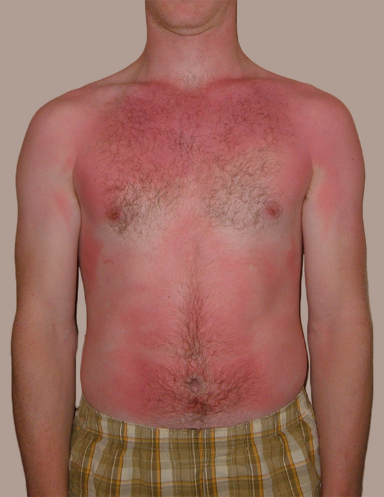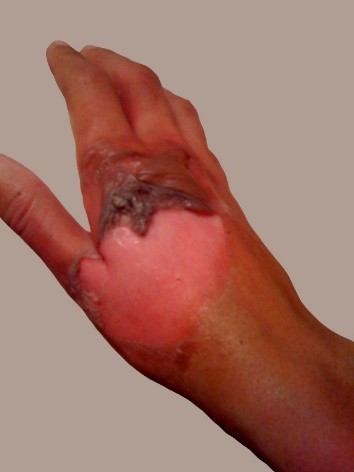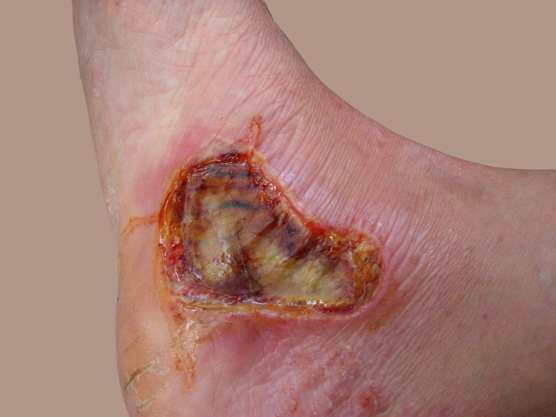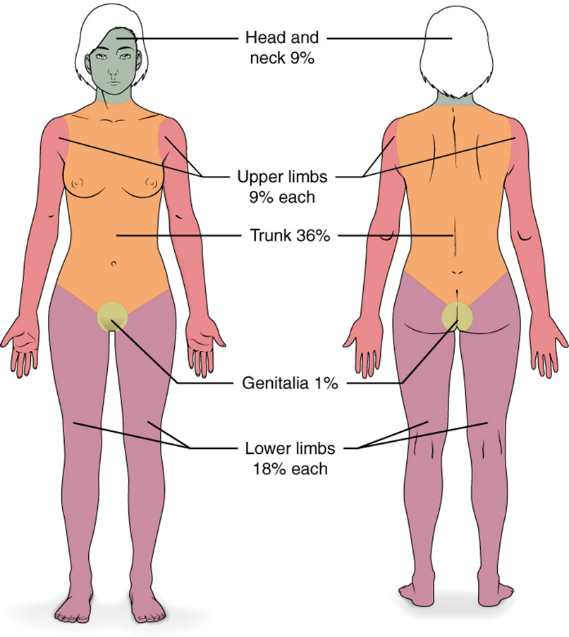Burns
Burns can result when the skin is damaged by intense heat, radiation, electricity, or chemicals. Burns can be at varying degrees with some only affecting the epidermal layer, while others can affect the dermal or hypodermal layers. Burns are classified by the degree of their severity.
- First Degree - redness and epidermal layer only/ no blisters/ blanches If you press gently on an area of the skin, it turns lighter before resuming its natural color. .
- Second Degree - redness and blisters/ into dermal layer/ no blanching / "partial thickness"
- Third Degree - beyond dermis / into underlying tissues / white-brown in color (most severe) "full thickness"
First Degree-

Second Degree -

Third Degree -

Go to Medline and Shriners Hospital to see more images showing 1st, 2nd, and 3rd degree burns. Look at the table below to read information about burns.
| Burn Degree | Layers Involved | Appearance | Texture | Healing Time and Prognosis |
|---|---|---|---|---|
| 1st degree | Epidermis | Red without blisters | Dry | 5-10 days and heal without scarring |
| 2nd degree | Extends into dermis/also called "partial thickness" | Red with blisters and blanches, meaning if you press gently on an area of the skin, it turns lighter before resuming its natural color | Moist | 2-8 weeks and some have scarring |
| 3rd degree | Extends into hypodermis and deeper/ also called "full thickness" | Stiff and white/no blanching | Leathery | Months with scarring and contractures, which is a condition of shortening and hardening of muscles, tendons, or other tissue, often leading to deformity and rigidity of joints |
Burns are also measured in terms of the body's surface area (or BSA) that is involved. The greater the surface area, the more at risk the person is for fluid loss and infection. The surface area measurement is estimated using "The Rule of Nines" as seen in the image.
If a person suffers burns to his or her entire trunk and head, 36% + 18% = 54% of the patient's BSA is affected. Greater than 20% in an adult is considered a severe case.

![]() Check your understanding:
Check your understanding:
1. What BSA would person with 2nd degree burns to the upper limbs have?
2. What degree of burn extends into the dermis, is red, blanches, and has blisters ?
3. What is the major difference between 1st, 2nd, and 3rd degree burns?
